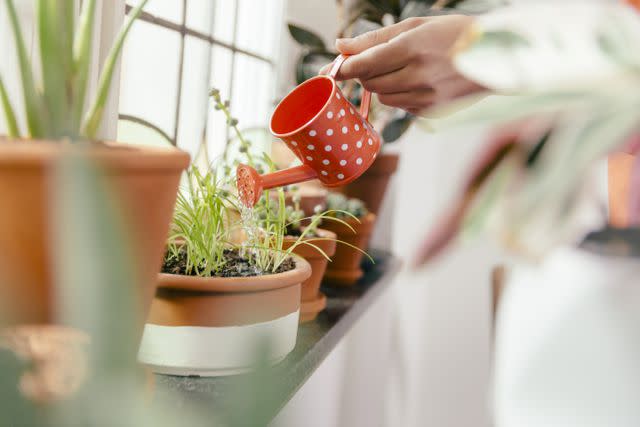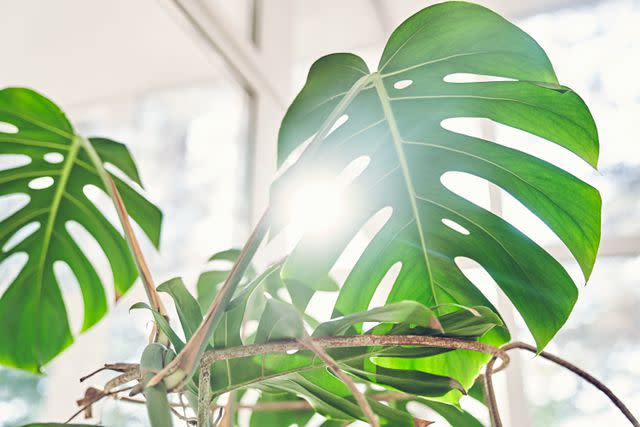6 Houseplant Mistakes You Need to Stop Making Right Now, Pros Warn
From overwatering to forgetting about humidity levels
:max_bytes(150000):strip_icc():format(jpeg)/GettyImages-1265001368-5317a9b4af524a71a1c0f69a61616fcf.jpg)
Sevda Ercan / Getty Images
You don’t necessarily need a green thumb to have thriving houseplants. There are plenty of low-maintenance varieties to choose from. However, if you still find yourself in a situation where your houseplants could be doing better, it may be because you’re making common houseplant mistakes.
We've asked gardening pros to share six houseplant mistakes they commonly see and effective solutions to help them become healthy and happy again.
Meet the Experts
Holly Mixon is the owner of Itty Bitty Trees, a houseplant and bonsai store
Sonya Query is the Marketing Director for Love, Plants, Inc., a line of indoor and outdoor plant care products
Nastya Vasylchyshyna is a botany expert at Plantum, an app that helps improve plant care.
Overwatering Your Plants
This is by far the most common houseplant mistake. “We as humans need to drink water daily, but plants have evolved to go through periods of ‘drought,’” Holly Mixon, owner of Itty Bitty Trees, says.
This is why many indoor plants, she says, prefer deep, but infrequent watering. Mixon recommends watering deeply until the water is flowing from the drainage, but properly allow it to dry afterward. By watering sparingly but deeply, you foster lower root growth and ultimately help support a more resilient plant.

Westend61 / Getty Images
Giving Them Too Much Sunlight
Plants need the sun to photosynthesize, a special process wherein the plant turns sunlight into energy. “This leads many people to believe that full direct sun will make all plants happy. Not so," Sonya Query, Marketing Director for Love, Plants, Inc., says.
Too much sun can lead to sunburns. Most plants, even the ones that love the sun, tend to do better with periods of indirect light. But how do you strike the balance between too much sun and too little? Query recommends a light, semi-transparent curtain in a sunny window or pulling the plant a few feet away.
Or stick with plants that prefer low-light situations and keep them away from full, direct light. “These include plants like Z.Z. plants, peace lilies, fittonia, snake plants, cast iron plants, and members of the prayer plant family,” Mixon says.

Darya Komarova / Getty Images
Choosing a Pot Without a Drainage Hole
Using cachepots, pots without a drainage hole, is another common houseplant mistake.
“Such planters are intended to be decorative," Nastya Vasylchyshyna, botany expert at Plantum, says. She explains how they're often used to hide the plant's actual pot from view.
If water cannot drain from the plant’s soil, most houseplants will become waterlogged and develop root rot. The good news is there’s an easy fix. Stop planting your houseplants in pots that lack a drainage hole at the bottom.
“Take note that this also applies to the potting mix,” Vasylchyshyna warns. “If it’s too dense or water-retentive, it’ll hold on to excess liquid instead of allowing it all to drain out.”
Using a Pot That's Too Small or Big
Speaking of houseplant containers, another common mistake people make with their houseplants is choosing a pot that doesn’t fit.
“Roots need room to party, but not an empty ballroom,” Query says. So, finding the right size for your plant is important to keep your plant happy and healthy.
The solution is knowing when to repot your houseplant. As a plant grows, so do the roots. This is why houseplants usually need to be repotted every few years.
“When you repot, choose a pot 1-2 inches larger in diameter than the current pot,” Query says. This will help provide enough room for the plant’s roots to stretch out but not allow too much water to build up.
Not Giving Enough Nutrients to Your Plants
Just like outdoor plants, indoor ones need nutrients. Sure, some plants like cacti and succulents can do with less nutrition—these plants prefer desert conditions after all—but most leafy tropical plants need more plant food, Mixon says.
“Over time, organic, nutritional material leaches out of the soil, and it needs to be added back in," Mixon says.
Thus, it’s important to periodically fertilize your houseplants. Mixon recommends fertilizing at least monthly in the growing season of spring and summer. “This will keep houseplants looking their best,” she says.
Forgetting About Humidity
Every variety of houseplant has adapted to its own natural habitat. For example, some plants need dryer conditions, like desert plants, while others from the rainforest need more humidity, or moisture in the air. Hence Vasylchyshyna recommends not only following the care regimens on your plant’s care card but also looking up which climate your plant’s particular species hails from.
Once you know your plant desires more humidity, you can add it to your home’s environment.
“Adjust the relative humidity level, lighting intensity, and watering frequency,” Vasylchyshyna says. All these will help support your humidity-loving rainforest plant. “High ambient humidity and regular watering are a must for them to thrive."
Read Next: 9 Houseplant Myths You Shouldn't Believe, According to a Pro
Read the original article on The Spruce.

